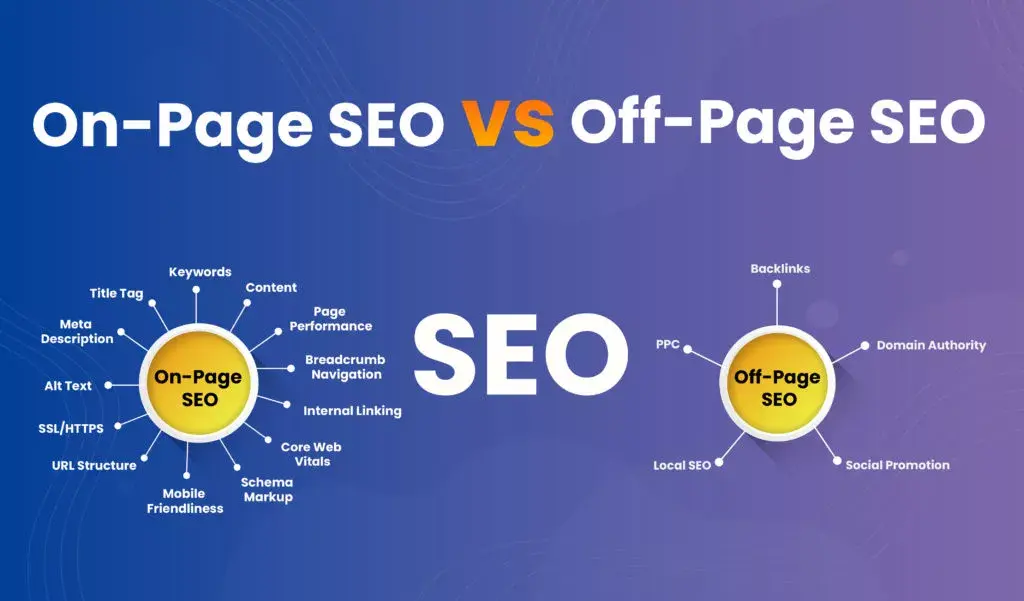Boost Your Business with These 8 Elements of Effective HVAC Website Design
Table of contents

In the transformational digital age, the HVAC sector has acknowledged the critical role of a competent website. A well-designed website not only promotes your services but also establishes the legitimacy of your brand. Your website often serves as a potential client’s initial impression of your firm, so getting it correctly is crucial.
Understanding your target demographic is essential for establishing a user-friendly HVAC website. Whether targeting homeowners or corporations, you must personalize your material to their needs. Web design relies heavily on aesthetics. A visually appealing website demonstrates the quality and professionalism of your HVAC services. Furthermore, in today’s fast-paced environment, users value ease of use and accessibility. A user-friendly website keeps visitors and improves the user experience, particularly with the advent of mobile surfing. Ensuring that your website appears and performs properly on all devices is critical.
If you own an HVAC firm, you understand how important online exposure is in the digital age. With so many businesses competing for attention online, distinguishing out and attracting new customers can be difficult. However, employing the good website design Jacksonville FL company, may increase your company’s internet presence and growth.
This article provides a complete insight into the realm of HVAC web design, ensuring that your company stands out in the congested internet market. These HVAC marketing ideas will help you attract customers and grow your firm, whether you’re just starting or want to improve your existing web marketing operations.
What is HVAC Website Design?
The top HVAC websites develop a digital platform that successfully represents your heating, ventilation, and air conditioning company online. HVAC companies are part of the home services and construction industries. As a result, an HVAC company may provide various services, including plumbing, indoor air quality, and electrical.
Services offered by an HVAC firm will differ depending on the location it serves. For example, the HVAC systems necessary in the southwestern United States differ from those in far northern states such as Minnesota and Wisconsin. The greatest HVAC websites should always be tailored to highlight the specific services provided by the company.
HVAC websites involve more than simply visual design. Design aspects are important for showcasing your brand, but creating a functional, user-friendly experience generates more leads for your company. A clean layout, straightforward navigation, and clear calls to action are among the most important design aspects.
The HVAC website experts will demonstrate that the goal is to create a website that promotes your HVAC services and makes it easy for potential consumers and search engines to grasp all of the services offered.
-
Link Building
Building relationships is a crucial part of HVAC marketing. Blog postings, like other web pages, should be SEO optimized. Each blog article can be optimized by using both internal and external links. Internal links guide visitors to certain pages of your website.
External links connect your website’s pages to other internet resources, such as relevant industry literature and references. All internal and external links must lead to relevant content on reputable websites.
An external link or backlink tells search engines that you support the website and believe the material is valuable. Creating backlinks is an important part of link building. Several strategies exist for actively seeking backlinks rather than waiting for others to do it. You can use a variety of HVAC marketing techniques to get backlinks, such as sending a guest post to an HVAC website or responding to Quora queries. You generate a backlink by including a link to a blog article that explains your answer in further detail.
Backlinks are established when two websites link to each other. Provide links to other reputable websites and promotional activities, such as a downloadable checklist for cleaning your HVAC system in the spring.
-
Building a social media presence

Without a doubt, millions of people use many social networking sites, and thousands of them are regular users. As a result, marketing your HVAC business via social media is always a good idea. Each blog article can be optimized by using both internal and external links.
Create a few social media networks based on your subscriber base if necessary. After logging into the platforms, use brand names and photos of your products and services to populate your accounts. This is a powerful approach for quickly gaining subscribers to your pages.
As your social media presence grows, make sure you create high-quality content that your target audience will like. Some of your supporters will be determined to work with you. As a result, you must demonstrate your ability to match their expectations by presenting facts about your business.
The beauty of social media platforms is that you may broadcast a wide range of content, including blog entries, website content, promotions, product updates and revisions, business news, and special offers. Using your digital channels to their full capacity is critical for producing high-quality results.
Ensure that you include a link to different social media platforms on your website to have more people follow your company’s accounts on different social media accounts.
It can broaden your online visibility and potentially include your clients in fresh forms of communication. Customers and other stakeholders expect companies to maintain official accounts on social media platforms such as Facebook, Twitter, Instagram, and Pinterest.
Another way social media can be incorporated into a blogging strategy is by advertising the posts and interacting with the bloggers’ audience. If you have accounts on social networks, add links to them on your website. It is best to place them on all pages: in the header or bottom.
-
High-quality visuals

It does not matter that your business focuses on HVAC products and services – your website can be as aesthetics-rich as possible. Choose the proper fonts, write sociable, high-quality photographs illustrating your heating and air conditioning services, and create videos illustrating everything from the company’s background to general tips on how your HVAC system works.
If you provide high-quality and relevant pictures concerning the services offered, you can offer an instant professional outlook on the website. Try incorporating good images of your heater, conditioner, and ventilation services. It is also wise to design a pleasant website. This type of stock image, in contrast to your team’s images at work, seems plain and vanilla.
Creating content or information is not restricted to writing pieces only. Another HVAC marketing idea is to record videos for YouTube or to broadcast live on Facebook news feeds. Explain to your clients that it is possible to change an air filter and similar tips to help other HVAC professionals distinguish you as an accurate source of information.
You can optimize your YouTube videos to be indexed on Google by integrating the keywords in the description part. Although the most preferred HVAC keywords may not be displayed on the first page, an appropriate video will likely appear on the first page because Google selects links, pictures, and videos and separates them from the rest of the searches.
-
Informative content
Even if you have relevant, good-quality material on your website, it is static and quickly outdated if not updated continuously. Every visitor wants more content; blogging is the best way to create and continually supply it. Your website’s blog could be used to post articles with news regarding industry advancements in air conditioning and heating and tips on HVAC system maintenance.
Thus, by regularly updating a blog, you can make the consumers come to your website whenever they want. Provide the website visitors with relevant information on your services, skills, and knowledge. List your services and explain how you could provide more value than clients’ existing suppliers. Another thing that can make you more credible is to make sure that you have framed your certificates, membership, and awards.
Include a blog page on your HVAC site in order to offer valuable information to the public concerning maintenance, energy efficiency, and other related matters. Original photographs also increase webpage ranking in the image search results and reassure visitors. This feature helps advertise your organization as a highly professional one from the industrial side, and the aspect of Google and all other search engines helps us provide the search engines with an understanding of what you offer and for whom.
-
Google Advertising
Today’s organizations and consumers are transforming towards appearing more digital. Digital marketing includes many elements, but you can begin with Google advertising relative to many components. Some common options include the famous and widely used PPC campaigns on Facebook, Twitter page, Google, or Bing, among others. The Websites you select should provide apt traffic to your HVAC business, and the ad space should be compatible with your company.
This means that only when a person clicks on the ad that you place on any website do you part with your cash. The person who accidentally clicked on the ad must pay for it. One also hires a reputable provider to perform digital advertising to overcome cases where clicks are emulated, and expensive advertising spend is lost.
When you aim to expand your company, bear in mind that other HVAC suppliers are likewise securing the very same keywords. AdWords on Google’s platform can be considered the best, with the help of which one can achieve remarkable results. However, to emphasize a company’s virtual presence, it is possible to spend some money on the process.
-
Website Functionality
A website’s layout and overall feel establish the first impression, but its usability can either make it successful or a failure. The fact that users who bring the site up on a smartphone browser cannot scroll or click the links of the pages they wish to access properly should be considered.
When such a situation arises, the value of the site’s aesthetics does not matter in the least. Users will quickly switch off from a site for such functional problems and will never come back to the site, even if it has a good graphic design. Functionality is affected by the device being used (mobile, tablet, desktop), the site’s loading speed, the URL structure, menu links, and the interface.
Navigation
The most frustrating feature of a poorly designed website is the navigation. Users who cannot effectively scroll and rapidly navigate to other website areas will feel discouraged and leave the site. Mobile websites are often the most difficult to navigate. Thus, designers should devote more attention to company. Because the screen is smaller than a tablet or desktop monitor, users should be able to easily navigate the site and its contents with their thumb and index finger.
Site Speed
Over half of internet visitors will leave a page that does not load within three seconds. This puts HVAC websites on the clock when users click on the results. With each passing year, the user’s minimal speed expectation rises. You may use Google PageSpeed Insights to assess the speed of your current website and get a report with suggestions for improving it.
URL Structure

A website URL hierarchy is critical to a site’s functionality for users. If you have pages for each service, ensure the URLs are logical and hierarchical. Let’s imagine you offer both home and commercial HVAC services. If so, a domestic AC repair page should be classified as a child page beneath the parent page for residential HVAC services. A good hierarchy is important for your HVAC SEO efforts and allows users to explore your site more easily.
Menu Links
HVAC websites that provide links to all relevant pages from the homepage menu. When converting traffic into clients, you want them to be able to see all of your services and readily select the one that interests them. Menu links should be organized into core categories (parent pages) and subcategories (child pages) to match the structure. To assist visitors to connect, you should include a Contact Us and an About Us page.
User Interface (UI)
The user interface, also known as the UI, focuses on the functionality that the user expects from your website. HVAC websites that provide links to all relevant pages from the homepage menu. They divide UI elements into four categories: input controls, navigational components, informational components, and containers. They emphasize simplicity, consistency, and purpose as the guiding principles of good user interface design.
-
Testimonials and reviews
Displaying genuine client testimonials and reviews will inspire trust in your prospective customers. Include them in an easily visible and accessible section of your website so that visitors can swiftly evaluate your company’s quality and reputation. Prominently display client testimonials and reviews on your HVAC website to increase trust and credibility.
Positive feedback from delighted clients can be an effective strategy for influencing new customers to use your services. Your HVAC website design can incorporate reviews in novel ways. Website builders use a plugin that allows website visitors to see social proof that this HVAC company is committed to providing high-quality service. Contributing to the community can encourage customers to advocate for you.
Join a service group, help your local school, or volunteer with humanitarian organizations. Your clients include local households and business owners. Choose a cause that is consistent with the values of your company. Networking with other business owners and supporting mutual hobbies fosters closer connections than those found online.
-
Call-to-action
The Call to Action (CTA) is an often ignored but powerful aspect. Direct potential consumers with simple terms like “Schedule Service” or “Get A Free Estimate.” The major goal is to guide visitors toward conversion and ensure they perform the necessary action immediately.
A well-designed HVAC website should prompt users to take action, whether getting an estimate, booking a service appointment, or subscribing to a newsletter. Strategically positioned calls-to-action (CTA) buttons throughout your website will assist users in taking the appropriate actions.
Place clear call-to-action (CTA) buttons throughout your website to direct users to take action, such as scheduling a service, obtaining a price, or downloading a guide. Make sure these buttons are visible and use compelling language to encourage clicks.
Tips to consider while creating or maintaining an HVAC website
-
Email Marketing
Email marketing is an effective marketing method to employ after collecting email addresses. Send emails with useful information such as new blog posts, upcoming sales, and seasonal HVAC system maintenance advice.
According to Web design Jacksonville, developing tailored emails can increase your mail open rates. The topic line should mention first names or specific locations. This marketing method allows you to strengthen your relationship with your clients. Each email you send should provide value to the recipient by informing or educating them. Split lists allow you to deliver targeted emails to your customers. Create an email list for new subscribers.
-
Giveaways or Discounts
HVAC companies may hold a great giveaway just like everyone else. Giveaways and contests are effective ways to grow your client base, raise brand awareness, and generate new leads. You must choose the relevant giveaway choice. A reward appropriate for the occasion and aim.
You might promote HVAC products or services by providing free installation, 50% off discounts, or other incentives. Everyone who enters your contest will be curious about your firm, and you can approach them later with special HVAC marketing offers.
-
FAQ section and Live Chat Support
Create a frequently asked questions (FAQ) section on your website to address common client inquiries. This can help you respond quickly to their questions, avoiding the need for direct interaction while also showcasing your HVAC experience.
Integrate live chat support onto your website to give visitors immediate assistance. Like online booking, this feature can improve customer service by providing real-time responses to inquiries and the opportunity to answer questions that convert leads.
-
Interactive Contact Forms and Maps for Service Areas
Regarding contact forms, simplicity and prominence are critical to good HVAC website design. Make sure to include interactive contact forms on your website to allow people to schedule appointments or submit inquiries quickly. Customers seeking heating and air conditioning services are unlikely to be exploring your website; they require immediate assistance.
Use interactive maps to describe the areas that your HVAC company serves clearly. This lets visitors immediately determine whether they are within your service radius, making it easier to contact you. A comprehensive list of cities in that service region adds SEO value by allowing site visitors to recognize their hometowns.
-
Infusing Personality Into Company Visuals
Make the most of professional images and films to portray your company’s individuality. Humanize your brand by highlighting the people behind the services, resulting in a true connection with potential customers. Customers’ trust and confidence increase when they can relate to the human side of your HVAC company.
-
It is clearly outlining the customer journey
Provide visitors with a roadmap of what to expect when contacting your company. A step-by-step guide outlining the customer journey following service scheduling promotes transparency and instills trust in potential clients.
Understanding the function of a landing page
When a user clicks on an online advertisement, he or she is directed to a landing page. It must have persuasive language, interesting imagery, and clear navigation options that direct users to the desired action.
Well-designed landing pages that prioritize credibility and conversions can be quite effective. They are the glue that holds a standard marketing effort together, making it a huge success. Landing pages focus on specific conversion goals, whereas websites contain a larger range of content. Landing pages require crisp and convincing design, with no distractions that could dilute their core goal.
-
Website Coding
Most visitors evaluate a website based on its front-end appearance, unaware that back-end code is frequently an important factor in how the site appears and how the user first accesses it. Most people are unfamiliar with coding, so the source code of a webpage is incomprehensible to the average visitor. The designers’ heavy lifting occurs in the same code, ultimately determining its success or failure. HTML, CSS, JavaScript, Schema Markup, and other technologies rely heavily on the codebase. Although AI models and no-code website builders have made everyone an amateur designer, they still lack the professional touch of an experienced web designer.
-
HTML
HTML is the coding used to make all websites. HTML tags text, indicating that a browser will display it as the designer intended. The language employs a set of tags that range from very basic to extremely complicated. HTML is directly related to SEO because it supports header, title, and meta tags. A CMS like WordPress simplifies HTML changes from an SEO standpoint, but the design still necessitates an extensive understanding of the coding language.
-
CSS
CSS is the code that tells browsers how to render HTML. While HTML elements indicate bolded text, CSS code tells the browser how that will appear on the website’s front end. CSS refers to what designers call “rules.” A CSS rule consists of three parts: a selector, a property, and a value. In addition to CSS rules, more complex CSS methods such as inline link CSS and internal CSS are always in use.
-
JavaScript
JavaScript is a programming language that incorporates interaction into websites. When HTML and CSS are coupled, they can create a custom webpage; however, without JavaScript, it will be static. The JavaScript code causes a webpage to respond to user events such as hovering, clicking, or entering commands. When utilized incorrectly, JavaScript can be an advantage and a handicap to website design.
-
Schema Markup
Schema Markup is a language of semantically linked tags injected into HTML to assist Google in comprehending the page. The schema markup microdata tags help search engines such as Google categorize and promote pages in search results. Schema is vital to SEO and may be the most important optimization component of a website’s codebase.
Conclusion
Many digital marketing companies can create an HVAC website. You will likely stay caught up in the competition if your website design includes cutting-edge capabilities. A great HVAC website design emphasizes your services, service area, customer testimonials, and contact information to encourage visitors to become clients.
Investing in a professional website design ensures the growth and profitability of your HVAC business. Incorporating these ten important features into your HVAC website design will create a professional online presence that looks good and efficiently drives leads and conversions. These websites act as a gateway to converting interested clicks into valuable consumers.
Consulting with Jacksonville Website Design Company specializing in HVAC businesses may assist you in establishing the ideal website to represent your business. Finally, the success of your HVAC marketing campaign is dependent on the proper design and implementation of conversion-focused landing pages.







